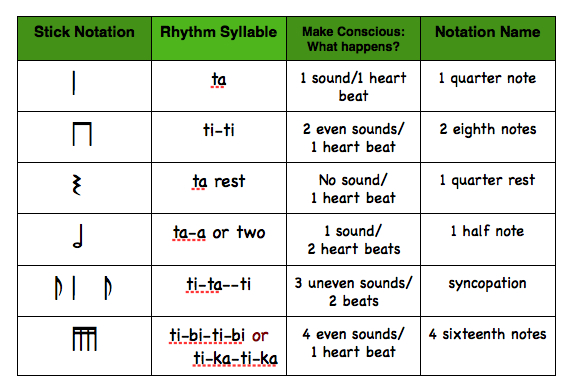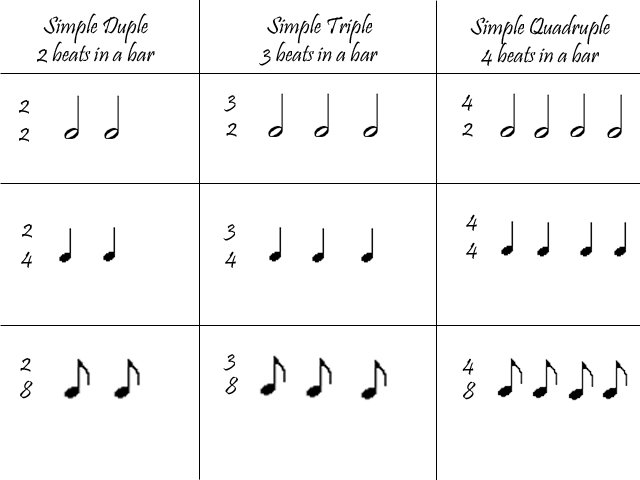The Pulse of a piece of music is like its heart beat - always steady. The number of "heart beats" per minute gives us the speed of the piece.
Below is a metronome. Depending on the placement of the weight, it beats at different speeds (tempo).
There are many different Italian terms used for different speeds. The terms common to ballet are Allegro (lively and fast) as in Grand Allegro and Adagio (slow) as in Adage.
The Rhythm of the piece is a pattern of strong and weak beats (and silences) that are built on the pulse. These beats are organised into bars. Every bar starts with a strong beat.
The rhythm is notated using the following symbols (notes) for specific numbers or divisions of beats.
Whole note = 4 beats(semibreve) Ta-a-a-a
Half note = 2 beats (minims) Ta-a
Quarter note = 1 beat (crotchets) Ta
Eighth Note = half a beat (quavers) group of 2 = Ti-ti
Sixteenth note = quarter of a beat (semiquavers) group of 4 = Ti-ka-ti-ka
Dotted Rhythm: Any of the above notes can be dotted which adds half as much again to its value.
Time signatures indicate how many beats (the top number) and what type of beat (the bottom number) in each bar.
eg 2 quarter notes per bar or 3 half notes per bar or 4 eighth notes per bar
Rhythms are created by using different note value combinations within each bar. The sum of the note values is the same as the top number in the time signature.
For example,
a bar in 2 time could have combinations of note values that add up to 2 "ta" beats per bar.
4





No comments:
Post a Comment